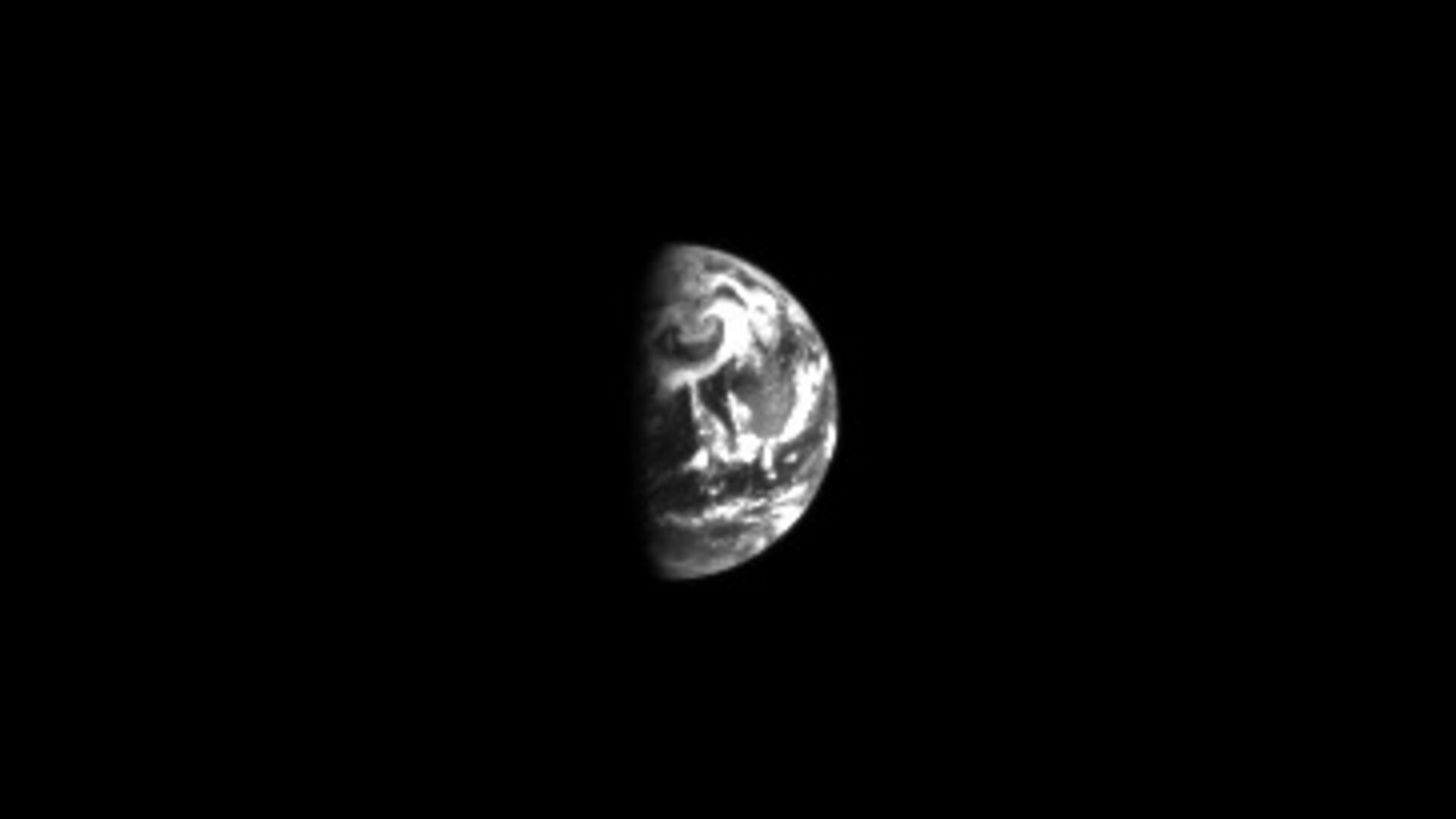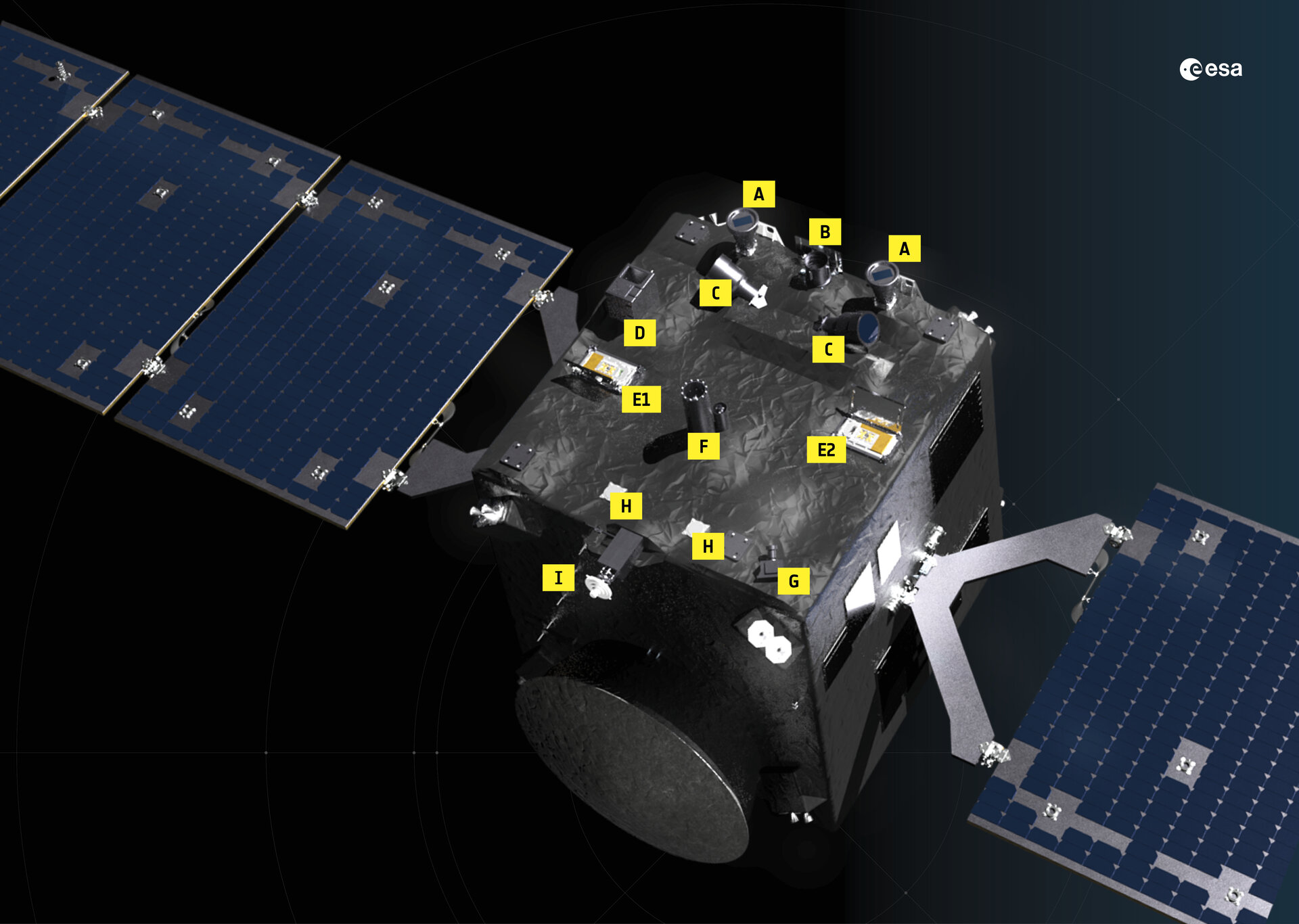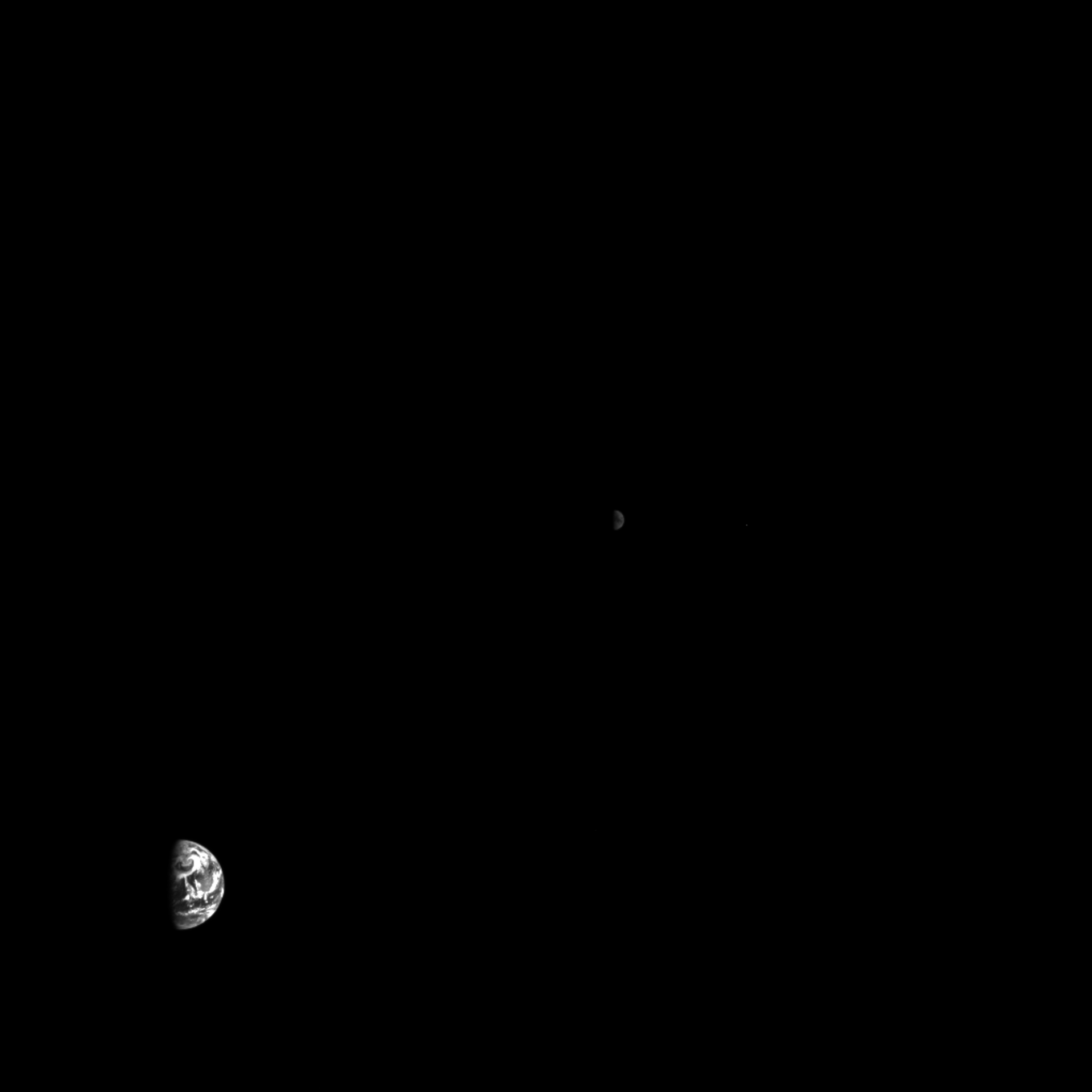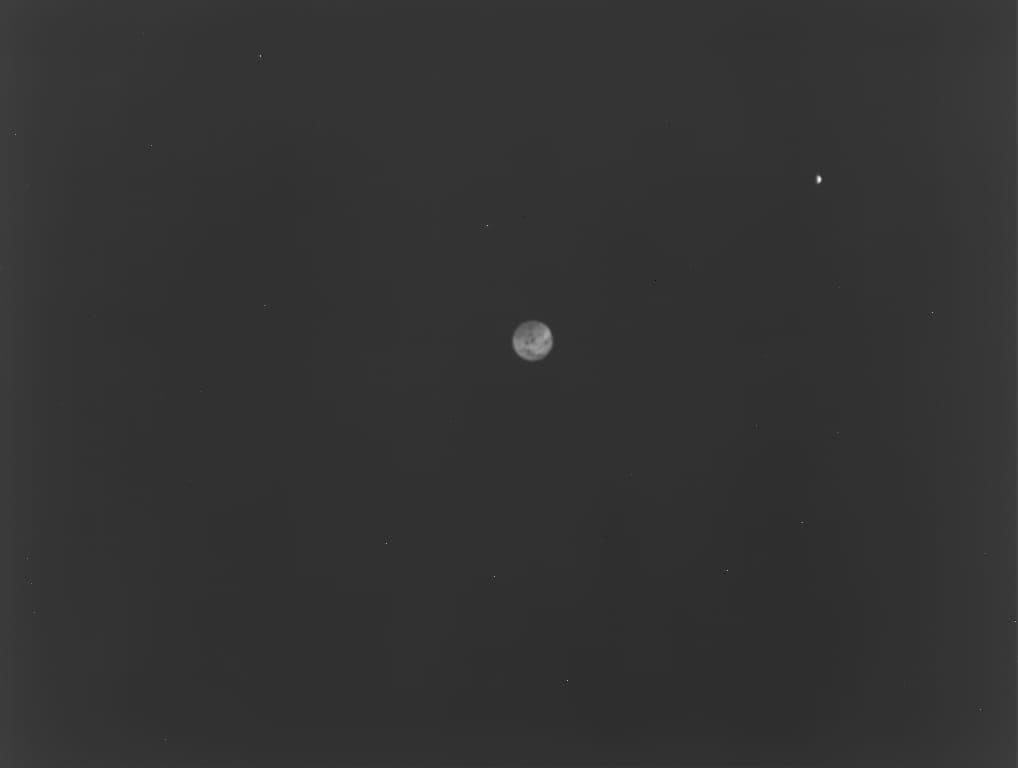Hera probe snaps its 1st images of Earth and moon on way to asteroid crash site
The probe took a farewell look back at Earth.

The European Space Agency's Hera asteroid mission has beamed back its first images from space, capturing a stunning view of Earth and the moon.
The Hera spacecraft successfully launched toward the asteroids Didymos and Dimorphos on Oct. 7, meant to follow up on NASA's DART (Double Asteroid Redirection Test) mission. After waking up its instruments, the probe looked back at home and snapped a final shot of Earth and the moon floating in the darkness of space.
"Farewell, Earth!," ESA said in a post on X (formally Twitter) releasing the new Hera images. "Last week, after we successfully launched our Hera mission, its instruments were switched on for the first time and the asteroid deck was pointed back towards our planet. This allowed Hera to capture the first images of Earth and the Moon from a distance of more than one million km!"
🌎 Farewell, Earth! 👋Last week, after we successfully launched our Hera mission, its instruments were switched on for the first time and the asteroid deck was pointed back towards our planet.This allowed Hera to capture the first images of Earth and the Moon from a distance… pic.twitter.com/usrZtxapRUOctober 14, 2024
The Hera mission aims to revisit the binary asteroid system that the DART spacecraft explored in 2022. During that mission, DART intentionally collided with Dimorphos and changed its orbit around Didymos as a demonstration of a planetary defense technique designed to alter the trajectory of a potentially hazardous asteroid.
Related: Behold the 1st images of DART's wild asteroid crash!
Now, Hera is going back to assess the aftermath of that impact and study both the surface and internal structure of the asteroid in greater detail with the help of two partner cubesats, named Milani and Juventas.
The images from Hera were taken on Oct. 10 and Oct. 11 using three instruments that will ultimately be used to explore and study the probe's asteroid targets. The instruments were switched on for the first time as part of the mission's post-launch assessment. During those checks, Hera's asteroid deck, which houses the spacecraft's instruments, was pointed back towards Earth, allowing it to capture a distant view of our planet and the moon, according to a statement from ESA.
Breaking space news, the latest updates on rocket launches, skywatching events and more!
The first image was taken using one of Hera's two Asteroid Framing Cameras (AFC), which are designed for navigation and scientific investigations. The AFC view shows Earth in the bottom left with the moon near the center of the frame from a distance of nearly 1 million miles, or approximately 1.6 million kilometers. Bright white swirling clouds can be seen in the skies above the sunlit Pacific Ocean.
A second image was taken using the spacecraft's Thermal Infrared Imager (TIRI) instrument, supplied by the Japan Aerospace Exploration Agency (JAXA), from a slightly shorter distance of nearly 900,000 miles, or approximately 1.4 million km. Earth is located in the center of the image, with the north pole oriented upward so that the eastern coast of the U.S. and the Atlantic Ocean are captured in the image. Meanwhile, the moon is visible as a bright point in the top right of the image.
"TIRI will image the Dimorphos asteroid in the mid-infrared spectral region to chart the temperature on the asteroid’s surface," ESA officials said in the statement "By charting the 'thermal inertia' of surface regions, or how rapidly their temperature changes, physical properties such as roughness, particle size distribution and porosity can be deduced."
Lastly, a false-color image released from ESA was taken using the HyperScout H instrument, which views light wavelengths invisible to the human eye and can therefore detect an asteroid's mineral makeup. From nearly the same vantage point as the AFC, Earth is captured in the bottom left of the image with the moon in the top right.
If all goes well, Hera will arrive at the asteroid system in late 2026. The spacecraft will evaluate the size and depth of the crater created by DART, as well as the efficiency of the impact, which will offer valuable information for future asteroid deflection missions.

Samantha Mathewson joined Space.com as an intern in the summer of 2016. She received a B.A. in Journalism and Environmental Science at the University of New Haven, in Connecticut. Previously, her work has been published in Nature World News. When not writing or reading about science, Samantha enjoys traveling to new places and taking photos! You can follow her on Twitter @Sam_Ashley13.




